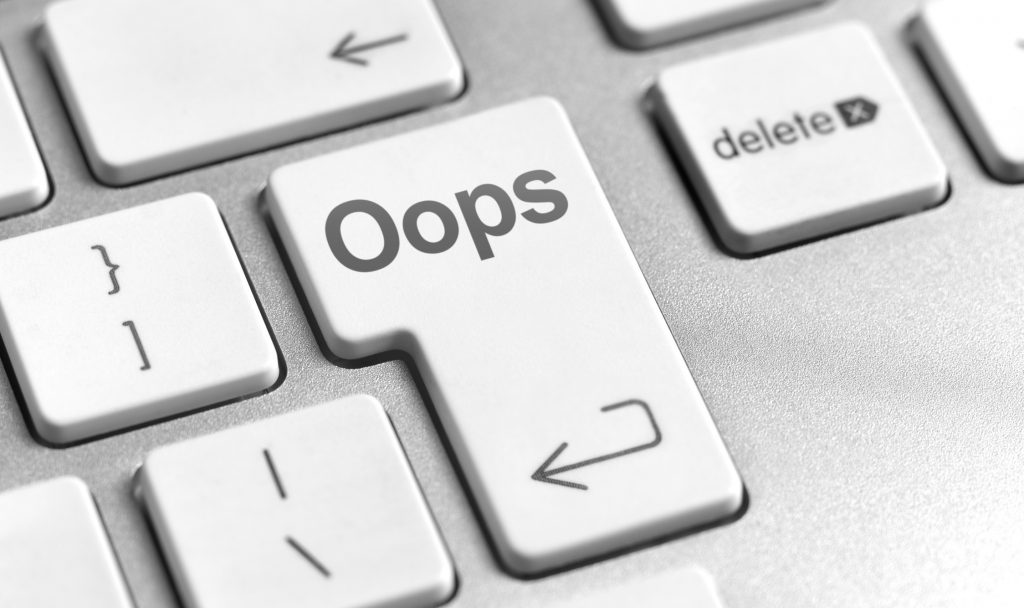No one likes to fail. Trip-ups are terrible. Mistakes create mayhem. Especially when it comes to customer satisfaction, no business wants to risk a blunder. Yet, successfully turning around a negative customer experience can pay off powerfully in the long-term. Here’s why service recovery matters and how to do it well.
Failure Is (Not) An Option
The cost of bad customer experience is widely reported. Some 33% of Americans will consider leaving a company after a single poor service experience, according to American Express. Plus, those unhappy customers are likely to complain to 15 people. The happy customer will only tell 11 others.
Increasing customer retention rates by 5% increases profits 25 – 90% according to Bain and Company. The Harvard Business Review tells us it’s as much as 5 to 25 times more expensive to acquire a new customer compared to keeping a current one.
Anyone in customer service knows that “failure is not an option.” But that’s not the most realistic of perspectives. Things go wrong. Products break. Service providers slip-up. What’s most important, really, is what your business does when the customer service experience goes sour.
“The best lessons are usually learned from failure.” — Virgin’s Richard Branson
Paving the Path to Customer Loyalty
We’re told that character isn’t demonstrated by how we act when things are swell. Rather, it’s illustrated by what we do when the going gets tough. A similar way of thinking can shift your view of customer experience.
Yes, customers are going to have a rosy view of your brand when things are going well. Yet you can also make a real impact on their perspective of your business by showing your brand cares when a problem arises.
Customer expectations of service interactions are rising rapidly. Customers all want easy, speedy issue resolution. Painless purchases. Personalized attention. Seamless integration of all interaction channels. Proactive service. And they want it now.
That said, if you fail, fix it. Fix it quickly and well.

Fix Fails Fast
Take KLM. You can bet that an airline often has to handle unhappy customers who have to deal with flight delays. Demonstrating instant sympathy, the company automatically offers food and beverage coupons through its app for any delays over three hours. They also send a message acknowledging the impatience the flier likely feels.
After all, customers want to feel understood. If they offer negative feedback, do something about it. Offer an apology. Investigate what went wrong. Share those findings with the customer. This kind of open communication can help signal that you care about the customer’s concerns.
Take responsibility. Blaming the customer is not going to help. Acknowledging any part your company played in the problem can help the customer feel heard. Offering a resolution is essential, too. Saying you’re sorry can improve the situation, but it won’t solve it. The more tangible the resolution, the better. It might be a refund, a discount, or a complimentary service. It’s a way to demonstrate you value that customer’s goodwill.
Supporting Customer Satisfaction
Giving frontline service people the power to address concerns, without enlisting supervisors, can also help turn a negative experience around.
Online shoe retailer Zappos claims to be “powered by service.” This includes empowering agents to make things right. Zappos customer service reps can accept “special-case returns, offer partial or full refunds in cases of loss of service, pay for damages, and “WOW” customers to provide solutions in any other manner they deem appropriate.” (Please say pony rides are appropriate! Puh-leeze!)
This demonstrates the power of customer service culture to support recovery. A business that has an established customer experience strategy and communicates that strategy to staff in clear guidelines is going to be more agile in reacting to a problem.
Fail Forward
Overall, it’s a good idea to look at negative customer experiences as opportunities for your brand. If you get a complaint, you have a chance to demonstrate:
- Great customer communication
- Personalized attention
- Willingness to listen
- Eagerness to improve
- Customer service standards
Done well, service recovery can turn a customer from a complainer to a brand evangelist. If you’ve taken this opportunity to embody your brand values and make a real connection, what went wrong will fade in memory compared with the ease of resolution or the excellent service the issue prompted.
How can you find out about customer experience disasters before it’s too late?
Customer satisfaction surveys are essential. Whether you keep it simple by tapping into essential experience metrics with Net Promoter Score, or mapping an entire customer journey, Sogolytics’s CX Platform helps prioritize what to do next for the biggest impact on customer experience.














